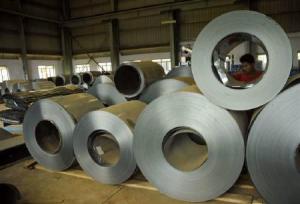 India is expected to quadruple export duty on iron ore fines from the present 5 percent to 20 percent and from 15 percent to 20 percent on iron ore lumps as it seeks to curb exports, mostly to China, in a budget move that hit domestic producer shares and could push spot prices to new record levels. The idea behind the move is to conserve Indian iron ore for domestic infrastructure needs which is expected to rise manifold.
India is expected to quadruple export duty on iron ore fines from the present 5 percent to 20 percent and from 15 percent to 20 percent on iron ore lumps as it seeks to curb exports, mostly to China, in a budget move that hit domestic producer shares and could push spot prices to new record levels. The idea behind the move is to conserve Indian iron ore for domestic infrastructure needs which is expected to rise manifold.
Iron ore prices more than doubled in the past two years, according to the Steel Index, on a surge in demand from India and China. Prices for the ore in China are forecast to rise more than the previously accounted for 7 percent this quarter, according to the Steel Index, published by London-based Steel Business Briefing Ltd. The increase in export duty would bring in around US$1.6 billion annually to New Delhi’s coffers on the basis of the volume and price of exports to China in 2010. That is a fraction of the government’s total expenditure of 12.58 trillion Indian rupees (nearly US$278 billion).
Almost all of India’s annual 100 million tonnes of iron ore exports head to China. Its overseas sales compete with the world’s top two exporters, Australia and Brazil. “This could tighten up the market further,” Henry Liu, regional head of commodity research at Mirae Asset Securities in Hong Kong told Reuters. “This will increase the floor price for Indian prices and if Indian prices increase then that will push prices to China higher.” Shares in Indian iron ore miner Sesa Goa, which is currently the largest exporter of iron ore witnessed extended losses on the duty imposition, hitting a 52-week low on the Bombay Stock Exchange.
Exports during the April-December period fell 17.02 percent from a year earlier to 64.4 million tonnes. India usually exports around 100 million tonnes per year. China buys over 96 million tonnes, making India its third-biggest supplier. Two other Indian states, leading producer Orissa and Chhattisgarh, which accounts for 5 percent of India’s shipments, have asked the federal government to allow them to ban exports. The Indian government would prefer states to focus on improved regulation of the sector and incentives for increased domestic use of the resource. That would better target illegal production instead of export bans which hurt all producers.
As rising steel prices add to the burden of input costs in both countries, manufacturers in China and India are battling rising inflation, growing social unrest and balancing interest rates. HSBC said China’s PMI fell to a seven-month low of 51.7 in February from 54.5 in January, while a government survey showed production at a six-month low of 52.2 after 52.9 in January, with a reading above 50 indicating expansion. Analysts own China’s depressed PMI to the two week long Chinese New Year celebrations held earlier this month when the entire country shuts shop and reunites with family. Echoing high input costs, HSBC’s India PMI hit 57.9 last month from 56.8 in January, its fastest for three months and Leif Eskesen, HSBC’s chief economist for India and the ASEAN area, said input costs had also gone up. Input prices accelerated to a record-high of 68.4, compared with 66.1 in January. Input prices in India have risen over five percent from December’s level.
